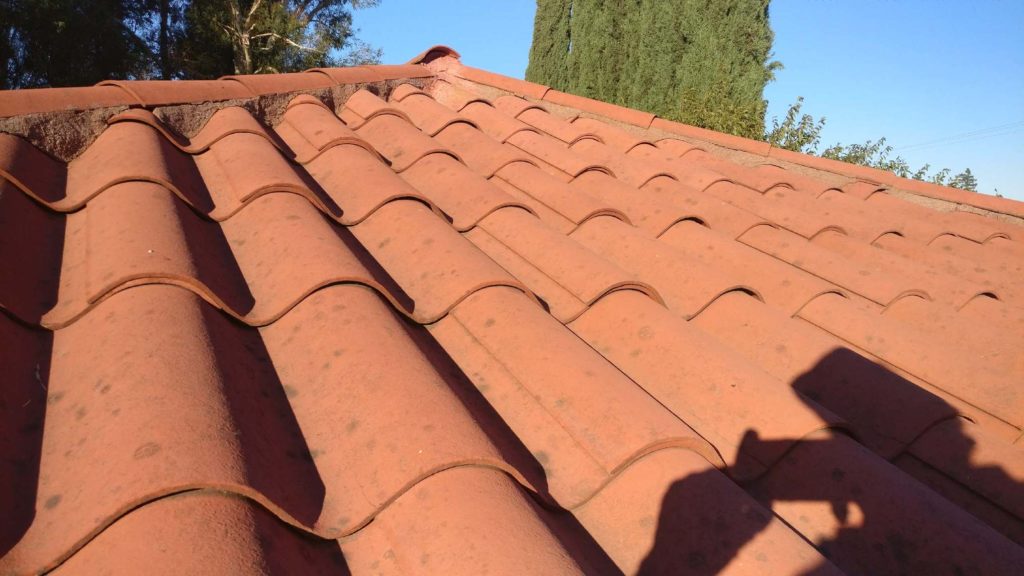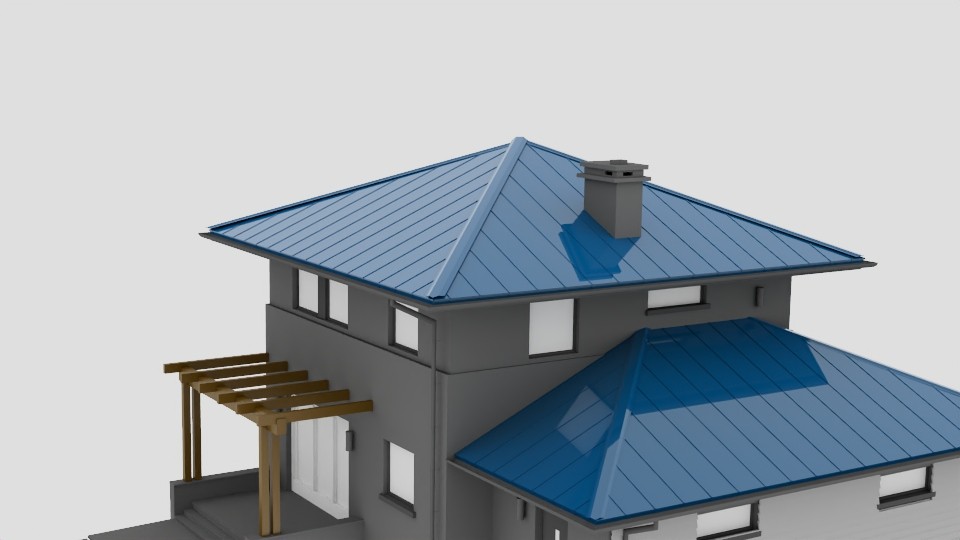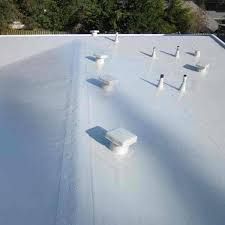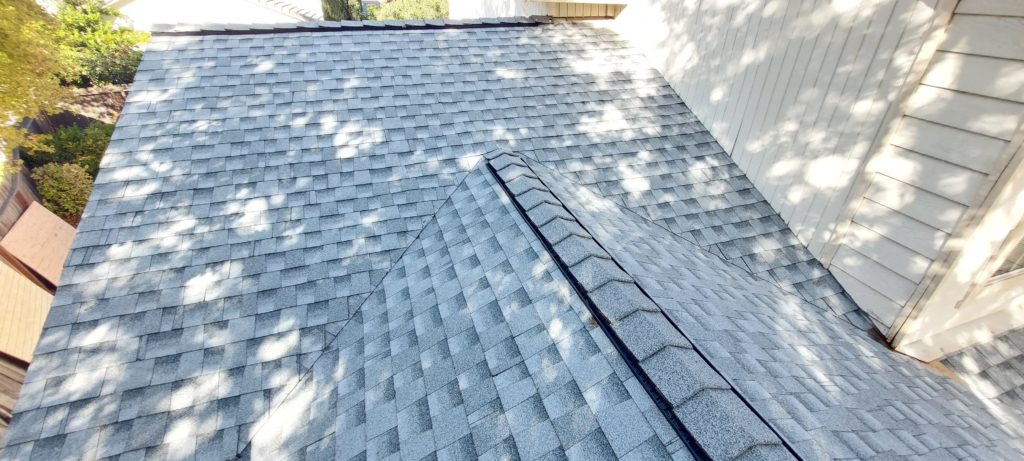Your roof is like a shield that protects you from the heat, and it’s important to have the right one to keep you cool and comfortable. So, whether you’re a homeowner, a builder, or just someone who loves talking about roofs (we won’t judge), sit tight and let us guide you through the best roof type to resist California heat.
We all know how scorching the California sun can get. It’s like being under a magnifying glass, with the rays penetrating your skin and cooking your brains! Okay, maybe that’s a bit of an exaggeration, but you get the point.
The Best Roofing Profile for California Heat

When it comes to choosing the best roofing profile for California heat, there are a few options to consider. Do you prefer a flat roof, a dormer roof, a hip roof, or a gable roof? Each has its own advantages and disadvantages.
Flat roof
A flat roof is a popular choice for commercial buildings and modern homes. It’s simple, cost-effective, and easy to maintain. However, it’s not the best option for California heat. Since the roof is flat, it absorbs more heat and has a higher chance of developing leaks due to the lack of proper drainage.
Dormer roof
This roof type has a sloped plane that projects vertically from a sloping roof, usually with a window. Dormer roofs are popular for extending living space, but they’re not ideal for California heat. Insulating and ventilating a roof with a slope can increase energy expenditures and make living rooms uncomfortable.
Hip roof
This, on the other hand, is a great option for California heat. This roof type has a gentle slope on all four sides, providing great ventilation and insulation. It also provides good protection against strong winds and heavy rain. However, hip roofs can be more expensive to build than other types of roofs.
Gable roof
This is a classic option for California heat. It’s also known as a peaked or pitched roof and has two sloping sides that meet at the ridge. Gable roofs provide great ventilation and insulation, and they’re relatively easy to build and maintain. They’re also great for shedding water and snow. However, they can be vulnerable to high winds and may require extra bracing.
The Best Roofing Materials for Hot Climates:

California’s scorching heat can take a toll on your roof, causing premature aging and even damaging the structure of your home. Choosing the right roofing material is crucial in withstanding the heat and keeping your home cool.
Here are some of the best roofing materials for hot climates, and why they can work with the heat:
Terra-Cotta Tiles and Ceramic Roofs
The capability of terra cotta tiles and ceramic roofs to reflect sunshine and heat makes them a preferred roofing material in hot areas. These clay-based materials absorb and release heat slowly, limiting heat buildup in your home. Additionally, these tiles are durable and long lasting, making them a wise investment.
Some manufacturers add UV-resistant compounds to tile glaze to increase heat resistance. This prevents fading, cracking, and warping and keeps tiles performing well under extreme heat.
Concrete Tiles Roofs
These tiles are an affordable and durable roofing option that are also energy-efficient. They are made of a mixture of cement, sand, and water, which makes them highly reflective and able to resist the effects of intense sunlight. Additionally, the tiles are available in a variety of colors and styles to match your home’s aesthetic.
To increase their heat resistance, manufacturers can add additives like silica fume, fly ash, or slag to the concrete mixture. These additives make tiles denser and more resistant to heat, hail, and severe winds.
EPDM Roofing Membranes
The synthetic rubber roofing material EPDM is excellent for hot regions because it reflects heat and sunlight, keeping your house cooler. EPDM is a UV-resistant compound comprised of synthetic rubber polymers with carbon black. This flexible material expands and contracts with temperature, preventing cracking and other damage.
To make EPDM roofing membranes even more heat resistant, manufacturers can add special heat-reflective pigments to the rubber compound. These colors reflect sunlight and limit heat gain, lowering energy expenses and making your home more comfortable.
Metal Roofs

In hot areas, metal roofs are a common choice because of their great heat resistance and reflective properties. These roofs are typically made of steel, aluminum, or copper, and they are available in a variety of colors and styles. Metal roofs are also highly durable and long-lasting, with some roofs lasting up to 50 years or more!
Metal roofs can be coated to reflect sunlight and limit heat gain to improve heat resistance. Some coatings incorporate reflecting pigments or other additives to assist your roof reflect heat and keep your home cool.
Green or “Living” Roofs
A green or living roof is a type of roof that is covered in vegetation, which helps to absorb heat and reduce energy costs. These roofs are great for hot climates because they provide natural insulation, which helps to keep your home cool in the summer and warm in the winter. They are also environmentally friendly and can help reduce your carbon footprint.
Manufacturers can utilize drought-resistant plants to make these roofs even more heat-resistant. Some excellent plant choices for California green roofs include sedums, succulents, and native grasses.
The Best Color Choice For Your California Roof

Are you considering a new roof for your California home but not sure which color to choose? While it may seem like a small decision, the color of your roof can make a big difference in how much heat your home absorbs, especially in sunny California.
Here are some tips to help you choose the best color for your roof:
Consider the Heat Factor
Just like wearing a black shirt on a hot summer day can make you feel uncomfortable, a darker-colored roof can absorb more heat, making your home feel hotter during the summer months. On the other hand, a lighter-colored roof can reflect more sunlight and keep your home cooler.
Think About Style and Surroundings
When choosing a roof color, think about the style of your home and the surrounding landscape. A neutral color like beige or light gray can blend in well with the environment, while a bold color can make your home stand out and add personality to your neighborhood.
Popular Color Choices
In California, popular roof colors tend to be shades of brown, gray, or black. These colors blend in well with the surrounding landscape and don’t draw too much attention to the roof. However, darker colors tend to absorb more heat, so if you’re looking to keep your home cool, a lighter-colored roof may be a better option.
Ultimately, the color you choose for your roof will depend on your personal style and preferences, as well as practical considerations. Just remember that darker colors will absorb more heat, while lighter colors will reflect more sunlight and keep your home cooler. So have fun with your roof color choice, but make sure to choose a color that will keep your home cool and comfortable during those hot California summers.
Materials for Steep Roofs Pitch > 2:12

When it comes to steep roofs with a pitch greater than 2:12, there are a variety of roofing materials that can work well in California’s hot climate.
- Asphalt shingles: These shingles are affordable, easy to install, and come in a variety of colors and styles to fit your home’s aesthetic. Additionally, many asphalt shingles now come with reflective coatings that can help keep your home cool during the hot summer months.
- Composite shingles: These shingles are made from a combination of materials, such as asphalt, fiberglass, and recycled materials, which make them more durable and longer-lasting than traditional asphalt shingles. They also tend to be more heat-resistant and can be coated with reflective finishes to improve their energy efficiency.
- Clay or concrete tiles: These are a popular choice for a more upscale look. These tiles are known for their durability and resistance to high temperatures, making them a good option for California’s hot climate. However, they can be more expensive than other roofing materials and may require additional structural support due to their weight.
- Slate tiles: These tiles are made from natural stone and are incredibly durable and long-lasting. They also have excellent insulating properties that can help keep your home cool during the hot summer months.
Materials for Low-Sloped Roofs Pitch ≤ 2:12

When it comes to low-sloped roofs with a pitch of less than or equal to 2:12, there are several roofing materials that work well in California’s hot climate.
- Single-ply membranes, such as EPDM or TPO: These materials are highly reflective, which means they can help keep your home cool and reduce your energy costs. They are also highly durable and long lasting, making them a great option for low-sloped roofs.
- Built-up roof systems (BURs): They are made up of multiple layers of roofing material, such as asphalt or gravel. These systems are highly durable and long-lasting, but they can be more expensive than other roofing materials.
Another option for low-sloped roofs is to apply a reflective coating directly to the roof surface. This can be done using a variety of different coatings, such as elastomeric coatings or aluminum coatings. These coatings help reflect sunlight and heat away from your home, keeping it cooler and more comfortable during the hot summer months.
Materials for Steep and Low-sloped Roofs

If you have a roof with a mixture of steep and low-sloped areas, there are several roofing materials that can work well in California’s hot climate.
- Standing-seam metal roofing: This type of roofing consists of interlocking metal panels that run vertically along the roof surface. Metal roofing is highly reflective and can help keep your home cool during the hot summer months. It is also very durable and long lasting, making it a great investment for your home.
- Asphalt shingles: While they are typically used on steep roofs, there are also special types of asphalt shingles designed for low-sloped roofs. These shingles are made with a special adhesive that helps them adhere to the roof surface and stay in place. They are also highly reflective, which can help reduce heat buildup in your home.
- Composite shingles: These shingles are made from a combination of materials, such as asphalt, fiberglass, and mineral granules. They are highly durable and long-lasting, and they come in a variety of colors and styles to match your home’s aesthetic.
- Clay tiles, concrete tiles, and slate tiles: These are also options for mixed roofs, but they are typically more expensive than other roofing materials. However, they are highly durable and long-lasting, and they can add a unique and stylish look to your home.
The Key Take-away
So, after exploring the best roofing types and materials for California’s hot climate, there are a few key takeaways that we can draw from this article:
- Flat roofs may not be the best option for hot climates like California because they can trap heat and increase energy costs.
- Terra-cotta tiles, ceramic roofs, concrete tiles, EPDM roofing membranes, metal roofs, and green roofs are all great options for keeping your home cool and energy-efficient in the summer heat.
- The color of your roof can also have a significant impact on its ability to resist heat, with lighter colors being the best choice for hot climates.
- Finally, whether you have a steep roof, a low-sloped roof, or a mixture of both, there are several roofing materials that can work well in California’s hot climate, including standing-seam metal roofing, asphalt shingles, composite shingles, and clay tiles.
Remember, when it comes to choosing the best roofing type and material for your home, there is no one-size-fits-all solution. Be sure to consider your budget, personal preferences, and the specific needs of your home when making your choice.
And if all else fails, just imagine yourself lounging comfortably in your cool, air-conditioned home while your neighbor sweats it out under a scorching hot roof. Now that’s a real-life situation we can all enjoy!


